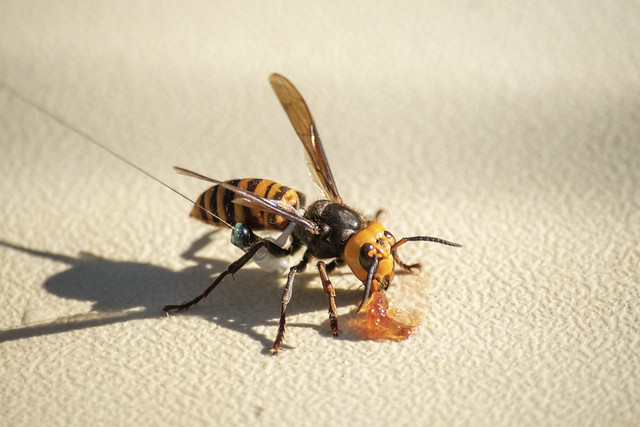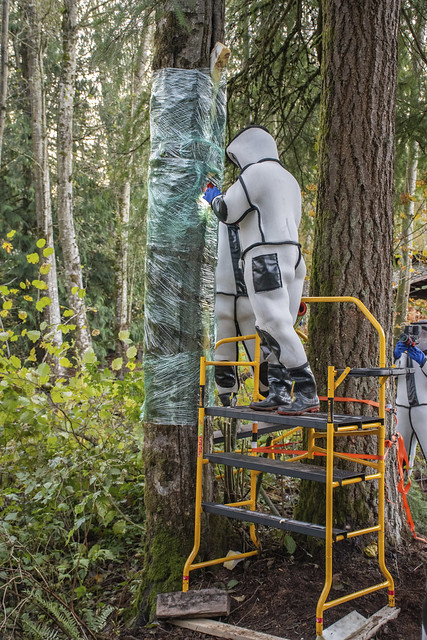
The longevity wasp (Vespa mandarinia), which is widely inhabited in East Asia, has recently crossed the sea and expanded its inhabiting range to the North American continent, and is locally called and feared as a killer bee. To eliminate these long-lived wasps, the US Department of Agriculture is attempting to mount a small transmitter on the body of a long-lived wasp.
Longevity wasps are the world’s largest wasps, widely distributed in East Asia, India, and Russia. It is known that such a long-lived wasp has not lived in North America, but a report from Washington, DC that was first sighted in the United States in December 2019, was confirmed to live there in May 2020. Longevity wasps drew great attention in the United States because of the case that they not only threaten the survival of bees, but can sometimes even take human lives.
The Washington State Department of Agriculture’s WSDA is also using a vacuum cleaner to remove long-lived wasps in October 2020. However, this treatment has the challenge of not knowing the nest location. Longevity wasps have the property of superimposing the inside of fallen trees and even underground cavities deep in the forest. For this reason, there was a nest near where a long-lived wasp was sighted, but the situation continued to be unknown.
After struggling to track the nest location, the entomologist devised a way to find the nest by installing a small transmitter on a new live long-lived wasp. In cooperation with the U.S. Department of Agriculture, a small transmitter was installed on a long-lived wasp.

There were several failures, such as missing a long-lived wasp or a small transmitter slipping out because the adhesive did not dry out, but the WSDA team used a transmitter to locate a nest in an open gap in the trunk of an old tree and absorbed 85 with a vacuum cleaner. After capturing 13 animals, he succeeded in removing the nest. Two queen bees and a number of worker bees that had survived in the nest were also disposed.
The WSDA team, which won this one case, notes that the fight to eliminate long-lived wasps is likely to continue for years to come. Longevity wasps are expected to expand their habitat in the United States. Related information can be found here .

